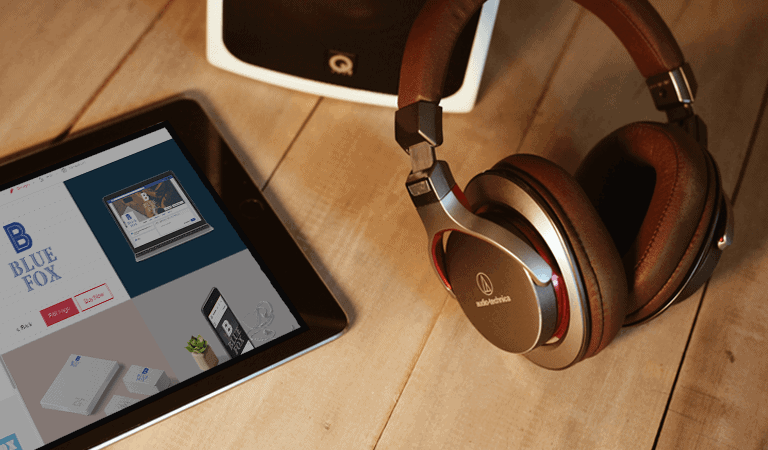
Nearly every budding entrepreneur inevitably asks Google what to do when starting their business – and the answers show that a huge part of developing your business is to focus on branding, with a capital B.
But what is it that you’re branding? Are you a real estate developer with ongoing projects in 18 different cities? Do you sell one really specific product, like homemade quilts or rubber ducks wearing tuxedos?
In other words, how do you know which type of branding is right for your business? The same way there are different types of logos to use for a business, there are various branding strategies a business can use to best make their mark on the corporate world.
In order to help you make the kinds of decisions necessary to create a marketable brand, we’ve broken down the main types of branding out there.
One of the more reputation-focused types of branding, corporate branding is about making a cultivated name for an entire corporation. The public will associate the organization’s name with a promise – that they stand behind the services they offer, and that they have a verifiable, positive performance record.
Good corporate branding has long-term effects, as these companies can rely on name brand-recognition; customers tend to automatically trust new products when they are associated with a brand they already recognize.
This usually refers to branding for the individual person, as opposed to branding a whole business. Personal branding is particularly important for celebrities, politicians or even digital marketers who want to maintain a positive public image (usually because it benefits them in their career to be endorsed).
Social media is a powerful tool when building a personal brand, because you have the ability to reach wide audiences while “speaking” from a personal platform. Entrepreneurs Tony Robbins and Neil Patel are both examples of personal branding done right; each of them invests heavily in his online presence and has established himself as an expert in his respective field.

Ever notice how ‘Kleenex’ has become a word synonymous with ‘tissues’? That’s because the product has reached the pinnacle of product branding success – the type of branding that gets consumers to choose one product over another based on the brand alone. You’ll often see logos or colors on specific items that jump out at you; this is because you’ve learned to associate the two together as a result of effective product branding.
If you work in the tourism industry, this type of branding is for you. Geographical branding focuses on the unique traits of a specific area or region as the selling point of a particular place and why you should visit.
You’ll often see countries claiming a type of food as their own or hyping up the unique history of the region. (Think Egyptian pyramids or Greek Moussaka.) Also, areas of the world that are trying to change their reputation can try their hand at geographical branding; the city of Amsterdam, for example, did a great job of this with their “I Amsterdam” rebrand, turning the focus away from their Red Light District and onto the cultural diversity of the city instead.

Also referred to as “internet branding”, this type of branding refers to how you position your company (or yourself) online. This could refer to building a website, establishing a social media presence, publishing a blog – anything that happens on the web under your name.
As the name suggests, this refers to branding that happens off the web. From doling out business cards to staging sit-down lunches with desired clients or leads, offline branding requires a mix of good design and outgoing spokespeople to represent your brand.

This is the moment where branding meets partnerships. Co-branding is when 2+ company brands are connected by the same product. For example, Uber and Spotify partnered on the “soundtrack for your ride” campaign, providing users of both apps with a better ride-sharing experience by allowing them to be the DJs of their trips.
This type of branding puts a strong emphasis on the customer, and on providing your clients with impeccable services. While every brand should do their best not to alienate their customers, service branding takes this one step further; it focuses specifically on adding perceived value to customer service, and uses this as their selling point.
People who interact with service brands look forward to the “extras” they get, whether it’s an airline giving out hot chocolate chip cookies on international flights, or a local coffee art store handing out “how-to DIY” packets with every purchase.

When you highlight the achievements of one specific ingredient within a product, or one specific branch within a business – those become the lure of the brand rather than the product or business as a whole.
Think Westin’s Heavenly Bed, where emphasizing the quality of the bed is what convinced people to choose Starwood hotels (later Westin and Sheraton) for their vacation accommodations.
If there’s a cause you believe in with all your heart, you may be able to channel it into your brand strategy. Specifically, activist branding, or “conscious branding” is a way to make a positive social impact through your brand, so that your brand ultimately becomes synonymous with the cause. Companies like Gillette have used this type of branding as of late (although whether or not it worked in the razor company’s favor is too soon to tell).

Also known as “minimalist branding,” this approach assumes that a product alone is enough to capture consumer attention without needing to rely on any bells or whistles.
In line with this philosophy, Brandless, a company that seeks to make quality food affordable, emphasizes their lack of brand as a way to show customers that they don’t have to pay a penny more than necessary for “branded” food. Instead, consumers have direct access to healthy, affordable food – of which the quality speaks for itself.
As you consider the different types of branding that have made many companies successful (and others less so), think about the face you want your company to show the world, and which type of branding is the best way to do that.
Ready to start? Check out these branding tools, and let your company message come to life!